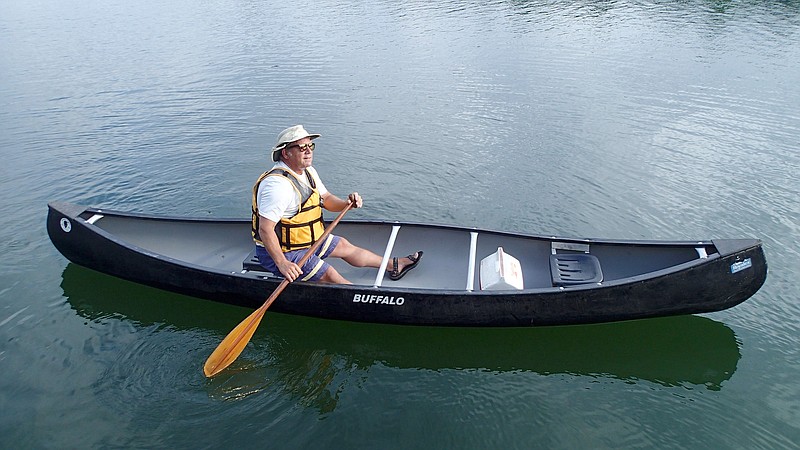You see it all the time. Someone paddling solo in a tandem canoe with the bow high in the air like the boat's doing a big wheelie. There's a better way.
Not only does a canoe wheelie look funny, it takes twice the effort to move the canoe through the water when a solo paddler occupies the stern seat. It only takes one step to remedy the situation.
Before getting into the canoe, simply flip the ends around so what once was the bow is now the stern, and the former stern is now the bow.
Notice the change in seat positions. Now the stern seat (the old bow seat) is farther forward, more toward the center of the canoe. So is the solo paddler. No more canoe wheelies.
Place your ice chest and other gear in the front of the canoe (the new bow) to add more weight to the front. Now the canoe has a nice level trim as you paddle merrily along.
Paddlers new to the world of solo canoeing usually paddle three or four strokes on the left side of the canoe, then three or four on the right side. That's fine, if you like your boat zig-zagging along with the bow wagging back and forth like a dog's tail.
Better to keep the canoe going straight. It's easy when aspiring solo canoe captains learn the J-stroke. It's a basic stroke for paddling on your favorite side of the canoe without frantically swapping the paddle to one side, then the other.
To do a J-stroke, pull that paddle backwards through the water like normal. At the end of the stroke, about the time the paddle is nearest your body, turn the paddle so the blade is parallel to the canoe. Now briefly push the blade away from the canoe.
Paddle, turn, repeat. You'll notice that little push away (called a pry in paddling lingo) at the end keeps the canoe tracking in a straight line. It counters the turning effect of the backward paddle stroke. Another tip is to brace the handle of the paddle on the gunwale as you push away.
You can J-stroke all day on one side of the canoe. Or, J-stroke on one side for awhile, then the other side as you glide efficiently along.
Do a computer search and you'll see all kinds of videos that show the technique. On the water, it only takes a moment to learn. Soon you'll be J-stroking along like a pro.
Another advantage of paddling solo in a tandem canoe is you stay drier in rough water. Plowing through big waves tandem can send the bow knifing into a wave with water pouring over the gunwales. Paddling solo, the bow is likely to ride up the wave, keeping water away.
Solo paddling is one reason kayaks are so popular nowadays. You're independent. There's only you, not you and no partner to depend on. No fighting about who isn't paddling right or pulling their weight.
If you're new to paddling a canoe solo, I'll wager you're going to love it enough that you may never want to paddle tandem again. Oh, unless you're with that special someone.
Some words to live by: Love many. Trust a few. Always paddle your own canoe.
Flip Putthoff can be reached at [email protected].
Sports on 07/09/2019

